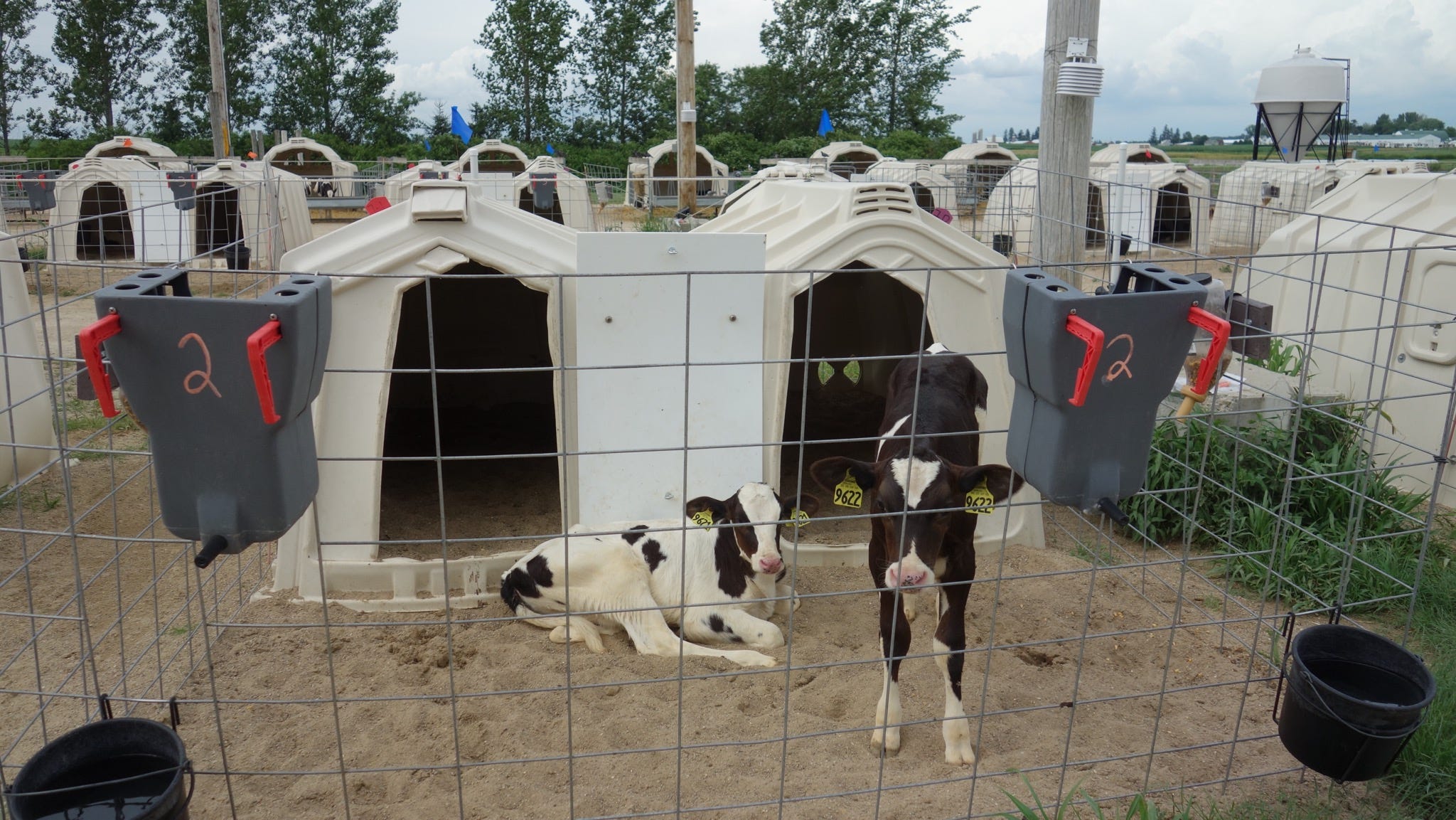Pairing dairy calves using hutches for housing

In recent years, an increasing number of producers have been successfully raising dairy calves in pairs or groups. As I wrote last November, in a piece titled “For dairy calves, two (or more) heads are better than one,” many farmers have seen the same benefits identified by research studies in terms of calf development, growth, and welfare.
Raising dairy heifers in single housing has been the standard practice for many decades because isolation can limit disease transmission. Lately, with widespread concerns about COVID-19, people have been keeping their distance from each other as well. Does this mean we should also return to separating calves?
Even though social distancing among humans is important right now to protect each other from this fast-moving pandemic, many of us are grateful to have contact with family members in our own households. Likewise, having companionship is important for calves since dairy cattle are a social species. Limiting the spread of disease between pairs or groups is still a best practice, by adhering to good management around sanitation, ventilation, and more.
In the research program I lead at UW-Madison, one of our goals is to help producers implement practical, low-barrier solutions for pair housing calves successfully. Late last year, a group of us who work in dairy calf extension and outreach conducted a research survey on pre-weaned calf care practices. We wanted to understand how producers are raising their calves so we can help them address relevant questions and challenges. We were grateful to get over 400 responses from dairy producers and calf raisers across the U.S., including over 200 producers from 51 counties in Wisconsin.
Among the Wisconsin producers, nearly 20% allow their pre-weaned heifers full social contact, either in pairs or larger groups. These producers use a variety of housing, demonstrating that there are many options for successful pair or group raising. Often times people picture “group housing,” to mean large group pens with automatic milk feeders.
Indeed, about a third of producers in our sample who group house use auto-feeders. The most common method, however, was housing calves in pairs or groups in a barn and feeding them manually, either with mob feeders or with individual bottles or buckets. Interestingly, one in five producers using pairs or groups house their calves outdoors, either with “super hutches” or by connecting individual hutches.
For producers who currently use outdoor hutches, connecting pairs of existing hutches allows them a way to dip their toes into pair housing without a substantial investment in new housing infrastructure or a major change to their management style. One of the concerns some producers have about pair housing, however, regardless of the housing system, is the opportunity for calves to engage in unwanted behaviors like cross sucking. Excessive cross sucking is thought to lead to frostbitten ears, navel infections, or mastitis or udder damage. Although the little research that has been done has not found a consistent relationship between cross sucking and those negative outcomes, there are nonetheless ways to reduce this nuisance behavior.
When calves begin a milk meal, their instinctive suckling behavior is stimulated and continues for at least 20 minutes. Feeding milk or replacer through a teat instead of an open bucket, especially using a slow-flow nipple, can redirect their suckling instinct more appropriately, both while the calf is drinking and afterward. Last summer, we tested this concept for pair-housed calves in hutches. Our preliminary results show that when calves were fed milk using slow-flow teat buckets, they spent more time drinking their milk and less time sucking on the water buckets, hutches, fence, and – mostly importantly – on each other.

Van Os is an Assistant Professor and Extension Specialist in Animal Welfare, Department of Dairy Science, University of Wisconsin-Madison
